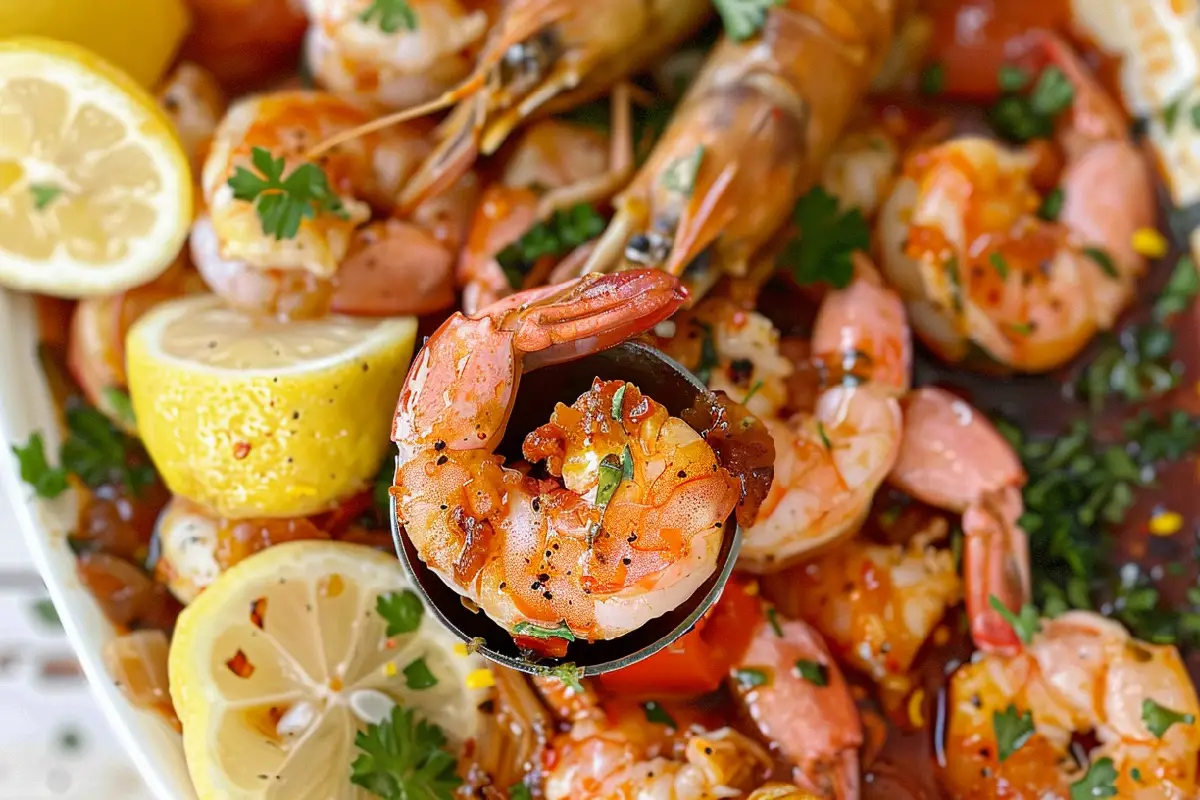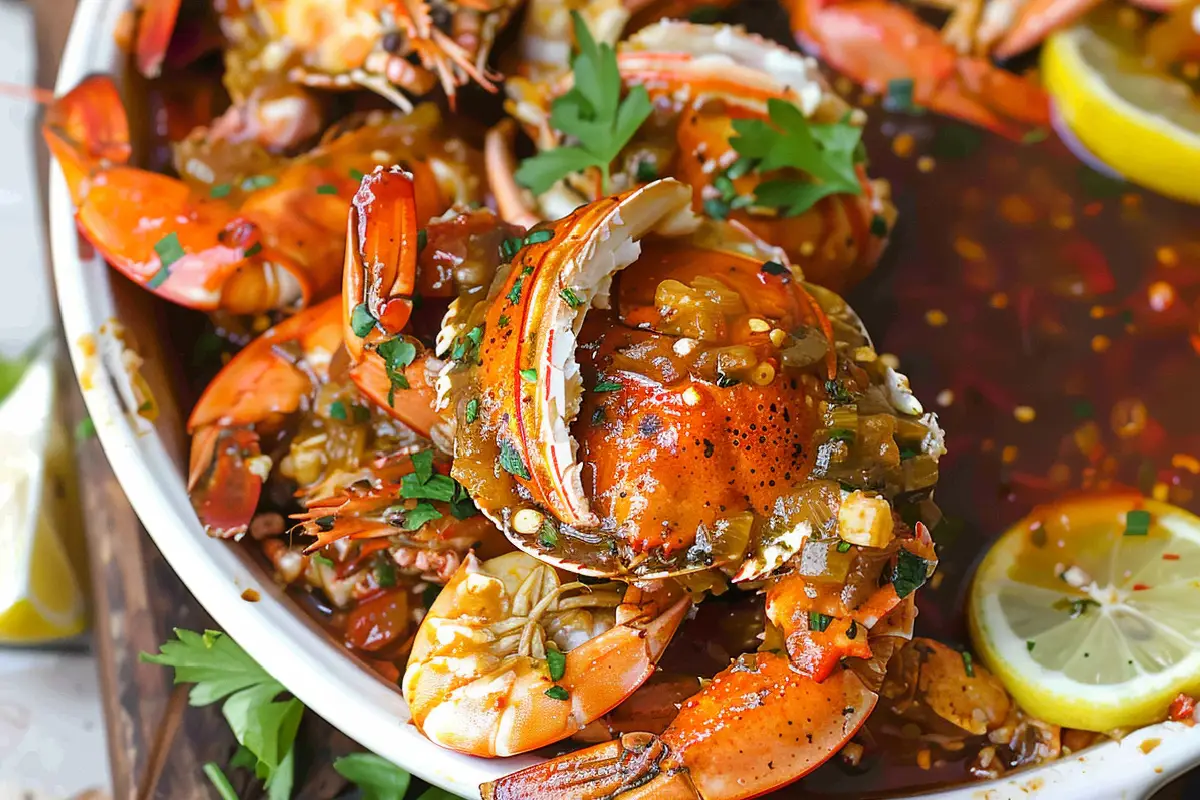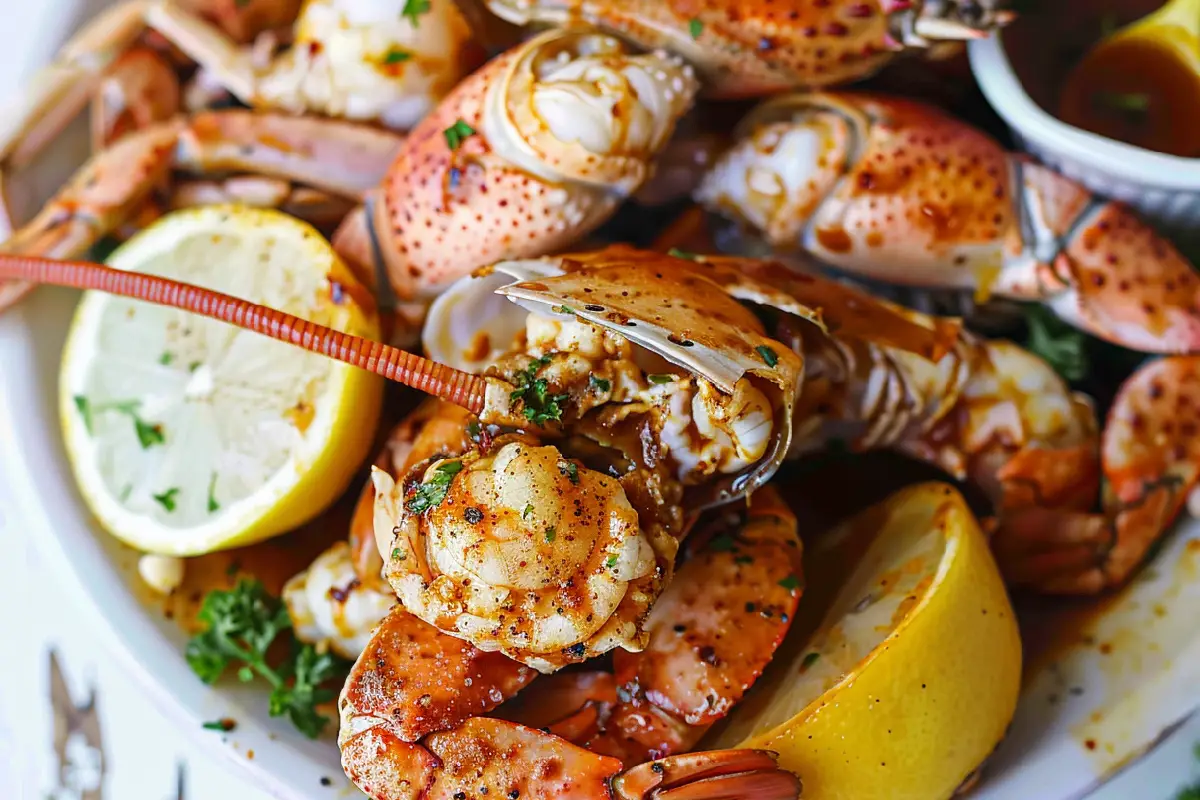Seafood sauces are essential for enhancing the taste and texture of your favorite dishes, such as buttery crab legs, shrimp boils, and fish fillets. However, getting the sauce just right can be tricky—too thin, and it won’t stick to your seafood, compromising the overall flavor. Fortunately, there are several effective ways to thicken seafood sauce, ensuring that it perfectly complements your dish. This guide will explore various methods to achieve the ideal sauce consistency.
Understanding the Consistency of Seafood Sauces
Thin sauces often result from excess liquid, improper cooking techniques, or a lack of thickening agents. The goal is to achieve a sauce that clings well to seafood, enhancing the dish’s flavor and appeal. There are many ways to thicken a seafood sauce, ranging from traditional ingredients like flour and cornstarch to innovative options like xanthan gum.
For broader information on seafood sauce recipes, including specific tips and techniques, check out our detailed guide on seafood boil sauce recipes. Here, you’ll find a variety of recipes and expert tips that can be adapted to your specific needs.
Common Ingredients Used to Thicken Seafood Sauces
Choosing the right ingredients is crucial for achieving the perfect sauce consistency. Below are some of the most commonly used thickeners:
- Flour: Often used to create a roux, adding structure and body to sauces.
- Cornstarch: A quick thickener that provides a smooth, glossy finish.
- Arrowroot: A gluten-free alternative similar to cornstarch, producing a clearer sauce.
- Heavy Cream: Thickens while adding richness, making it ideal for creamy seafood sauces.
- Butter: Helps emulsify the sauce, adding a slightly thicker, silkier texture.
These thickeners can be combined or used individually to achieve the desired result. Learn more about the ingredients and how they contribute to perfect sauce consistency in our article on what is seafood butter sauce made of.
Method 1: Using Flour

Flour is a traditional ingredient to thicken seafood sauce, often used to create a roux, which is a mix of flour and fat. This classic method has been used in French cuisine for centuries and is particularly effective for sauces that need substantial body and depth.
- Make a Roux: Start by melting butter in a pan, then add an equal amount of flour. Stir continuously until the mixture forms a paste, then slowly whisk in your sauce until fully blended. Cooking the roux for a few minutes helps eliminate the raw flour taste and enhances the sauce’s flavor.
- Avoiding Lumps: To prevent lumps, whisk continuously while adding the roux to the sauce. If lumps do form, you can strain the sauce or use an immersion blender to smooth it out.
- Pros and Cons: While effective, flour can slightly alter the sauce’s flavor and make it look a bit cloudy. However, it’s excellent for hearty sauces that pair well with rich seafood dishes like crab and lobster.
- Enhance with Flavors: You can add spices or herbs like garlic powder, thyme, or paprika to the roux, infusing the sauce with additional layers of flavor.
Method 2: Cornstarch Slurry
Cornstarch is another popular option, particularly for clear sauces that need a glossy finish. It’s a versatile thickener that works well for a variety of seafood sauces, including Asian-inspired dishes like sweet and sour or teriyaki glazes.
- Create a Slurry: Mix 1 tablespoon of cornstarch with 2 tablespoons of cold water until dissolved. The slurry must be smooth before adding it to the hot sauce to avoid clumping.
- Add to Sauce: Slowly whisk the slurry into the simmering sauce and cook until thickened. The sauce will usually reach the desired consistency within 1-2 minutes.
- Benefits: Cornstarch offers a quick thickening solution without clouding the sauce, making it an excellent choice for seafood dishes that benefit from a clear, shiny appearance.
- Adjusting Flavor: Cornstarch is neutral, but you can add other seasonings like lemon zest, soy sauce, or fresh herbs to boost the sauce’s taste. This method is particularly useful for brightening sauces that accompany grilled or broiled fish.
Method 3: Reduction Technique
Reduction involves simmering the sauce to evaporate excess water, naturally thickening the mixture without altering its ingredients. This method is particularly useful for seafood sauces that rely on a delicate balance of flavors.
- Simmer the Sauce: Allow the sauce to cook over medium heat, uncovered, to reduce its volume and concentrate flavors. Keep an eye on the sauce, stirring occasionally to prevent burning, especially towards the end when the liquid is nearly reduced.
- No Added Ingredients: This method is perfect if you want to thicken without altering the sauce’s original taste. It’s ideal for sauces that already have complex flavors, like a white wine reduction or garlic butter sauce.
- Cons: Be mindful that reduction can intensify the sauce’s flavor, which may not always be desirable. If the sauce becomes too strong, you can balance it by adding a small amount of cream, stock, or a touch of sugar.
- Adjust Seasoning: As the sauce reduces, taste periodically and adjust seasonings, such as salt and pepper, to ensure a balanced flavor. This step is crucial because the reduction will concentrate not just the liquid but also the saltiness and acidity.
Method 4: Using Egg Yolks
Egg yolks can add a rich, luxurious texture to sauces, making them ideal for creamy or buttery seafood dishes like hollandaise or beurre blanc. This method provides a silky, custard-like consistency that elevates the sauce to restaurant quality, answering the question how do you thicken seafood sauce effectively with a smooth, decadent result.
- Temper the Yolks: Whisk egg yolks in a bowl, then slowly add hot sauce into the yolks while whisking continuously. This gradual process prevents the eggs from cooking too quickly. Once tempered, slowly incorporate the mixture back into the main sauce.
- Avoiding Curdling: Be sure to whisk steadily and control the heat to prevent the yolks from scrambling. Keeping the sauce at a low temperature while integrating the yolks is key to achieving a smooth, glossy finish.
- Ideal For: This method works well for sauces where a custard-like thickness is desired. It’s perfect for richer seafood dishes like poached salmon or crab cakes.
- Enhance with Spices: Adding a pinch of cayenne pepper, nutmeg, or smoked paprika to the egg yolk mixture can deepen the sauce’s complexity and add an extra layer of flavor.
Method 5: Pureed Vegetables
Pureeing vegetables offers a natural and nutritious way to thicken seafood sauces. This method is excellent for enhancing the flavor profile of the sauce while adding valuable nutrients.
- Blend Starchy Vegetables: Use options like potatoes, carrots, cauliflower, or even bell peppers. Steam or roast the vegetables until soft, then puree them in a blender until smooth. Roasting adds a smoky, caramelized depth to the vegetables, enhancing the sauce.
- Incorporate into Sauce: Stir the puree into your sauce and cook until combined. Pureed vegetables can significantly alter the color and flavor, so choose vegetables that complement your seafood dish.
- Enhances Flavor: Adds subtle, complementary flavors that enhance the overall dish. For example, cauliflower provides a mild, creamy thickness, while carrots add a touch of sweetness and vibrant color.
- Vegetable Combinations: Try mixing different vegetables, like sweet potatoes and red bell peppers, for a unique flavor twist. This approach is particularly effective in tomato-based sauces or bisques.
Method 6: Adding Cream or Butter
Cream and butter not only thicken the sauce but also enrich its texture, adding a velvety mouthfeel that pairs beautifully with seafood. These ingredients are staples in many classic French sauces, like beurre blanc or creamy garlic sauce.
- Heavy Cream: Stir in a few tablespoons of heavy cream towards the end of cooking for a rich, velvety finish. The fat in the cream binds the sauce, giving it a luxurious consistency.
- Butter: Gradually whisk in cold butter cubes, which will emulsify and slightly thicken the sauce. Adding butter off the heat prevents it from separating, maintaining a cohesive sauce.
- Perfect Pairings: These thickeners are especially good in lemon butter or garlic cream sauces, enhancing the seafood’s natural flavors. Butter-based sauces pair excellently with shellfish, such as scallops or lobster.
Common Mistakes to Avoid
While thickening seafood sauce can be straightforward, there are common mistakes that can ruin your efforts:
- Adding Too Much Thickener: This can lead to a sauce that is overly thick and unpalatable. Always add thickeners gradually, whisking constantly and assessing the consistency before adding more.
- Improper Mixing: Always whisk thoroughly to ensure the thickener is evenly incorporated. Poorly mixed thickeners can result in an uneven texture, with pockets of starch or fat.
- Overcooking: Overcooking flour or egg yolks can result in a grainy texture. Thickeners should be added towards the end of cooking to avoid this issue.
- Not Adjusting Seasoning: Thickening can concentrate flavors, so always taste and adjust seasoning to maintain balance. Adding a pinch of salt, sugar, or acid can help bring the sauce back into harmony.
Tips for Balancing Flavors When Thickening Seafood Sauce
Thickening a sauce can alter its flavor profile, so here are some tips to keep your seafood sauces balanced:
- Taste as You Go: Regularly taste the sauce as it thickens and adjust seasonings accordingly. Thickeners can dull some flavors, so a little extra seasoning might be necessary.
- Add Acidity: If the sauce becomes too rich, a splash of lemon juice, white wine, or vinegar can brighten the flavors and cut through the fat.
- Fresh Herbs: Add herbs like dill, parsley, chives, or tarragon towards the end for a fresh, vibrant touch. Herbs not only add flavor but also enhance the visual appeal of the dish.
FAQs on How to Thicken Seafood Sauce

How can I thicken my seafood sauce without adding extra ingredients?
The reduction method allows you to thicken your sauce by simmering it down, enhancing the consistency without adding any new components.
Can I use coconut milk to thicken seafood sauce?
Yes, coconut milk’s high fat content can help thicken sauces while adding a slightly sweet, creamy flavor that pairs well with seafood. It’s a great option for Thai-inspired dishes or any sauce where you want a hint of tropical sweetness.
What if my sauce gets too thick? How can I fix it?
If your sauce becomes too thick, whisk in a bit of warm broth, water, or additional sauce base until the desired consistency is reached. This adjustment can also help re-balance the sauce if the flavors have become too concentrated.
Is it safe to thicken seafood sauces with raw eggs?
Yes, as long as the eggs are tempered properly by slowly adding hot liquid to the yolks before incorporating them back into the main sauce. This technique prevents the eggs from scrambling and ensures a smooth, cohesive texture.
Can I freeze thickened sauces? Will the texture change?
Thickened sauces can be frozen, but some thickeners like cornstarch may break down after thawing, altering the texture. If freezing, consider adjusting thickness after reheating or using thickeners like flour or xanthan gum, which hold up better when frozen.
How do I prevent my thickened sauce from becoming lumpy?
To avoid lumps, always whisk the thickener slowly into the sauce and maintain constant stirring. For thickeners like flour or cornstarch, ensure they are fully dissolved in liquid before adding them to the hot sauce. Using a fine-mesh strainer can also help remove any lumps.
Are there low-carb alternatives for thickening seafood sauces?
Yes, options like xanthan gum or pureed vegetables are great low-carb choices for thickening sauces without adding significant carbohydrates. These alternatives maintain a healthy balance while still providing the desired texture.
Conclusion: How do you Thicken Seafood Sauce?
Thickening seafood sauces is a simple yet crucial skill that can dramatically improve the quality of your dishes. From traditional roux and cornstarch slurries to innovative techniques like using egg yolks and xanthan gum, there’s a method that fits every preference. Experiment with these techniques to find the right balance and ensure your seafood is perfectly complemented by a thick, flavorful sauce.
For additional inspiration and recipes, explore our guide on Argentine Shrimp with Linguine to discover other delicious seafood combinations that pair wonderfully with perfectly thickened sauces.
Mastering the art of thickening sauces can elevate your cooking, making your seafood dishes stand out with perfect texture and taste.

